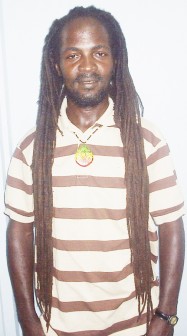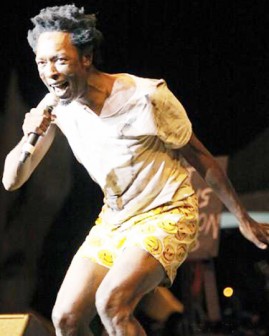What is calypso? Many have attempted to answer that question, including a few calypsonians. These versions vary from fanciful explanations about how it came from Africa or France to scholarly background and historical studies of how it evolved in the Caribbean from the times of slavery.
The legendary and undisputed king of calypso, The Mighty Sparrow, sang “I am a slave from a land so far / I was caught and brought here from Africa.” The slave told how “Ah wuk so hard each day,” in such deplorable conditions that he was forced to find means of survival and self expression through outcries in song “and is so calypso began.” The Roaring Lion wrote of how it came “From France to Trinidad” along with his own noble heritage. The Mighty Chalkdust added his own historical studies to those of critics and researchers Gordon Rohlehr, Errol Hill and Keith Warner.
 Even other scholars like Ian Robertson have told us that calypso functioned orally for the people as their newspaper to inform and comment “when newsprint no deh.” We now know that it had its beginnings among the Creole enslaved of French Caribbean settlers who moved to Trinidad after 1783, and developed steadily under the name kaiso. We know that it is a musical form with different types, that it developed along with carnival, with social struggle and controversial political commentary as well as risqué entertainment; and that it gave rise in the late twentieth century to the very popular soca.
Even other scholars like Ian Robertson have told us that calypso functioned orally for the people as their newspaper to inform and comment “when newsprint no deh.” We now know that it had its beginnings among the Creole enslaved of French Caribbean settlers who moved to Trinidad after 1783, and developed steadily under the name kaiso. We know that it is a musical form with different types, that it developed along with carnival, with social struggle and controversial political commentary as well as risqué entertainment; and that it gave rise in the late twentieth century to the very popular soca.

But one thing that is clear and universally accepted without dispute is that it is an art. “What instruments we have agree” that it is an art form that can “teach the free man how to praise” (Auden, In Memory of WB Yeats, 1939). It is a craft that has to be mastered or at least practised by calypsonians, with strategies of lyricism, wit and subtleties; a most revered and acclaimed form of oral literature in the Caribbean.
Three examples of winning calypsos can make interesting commentary on the art or lack thereof in the compositions: Dey Too Bright by Trinidad Calypso Monarch 2010 Kurt Allen, Bring Back Brer Anansi the winning Junior Calypso in Guyana 2011 by Diana Chapman, and the song by De Professor that won Guyana’s Calypso Monarchy 2011. A look at these three may help to show us and say something about “what is calypso.”
Kurt Allen’s Dey Too Bright is a masterpiece in composition, presentation and performance which strode away with the Monarchy, dethroning The Mighty Chalkdust in the 2010 Trinidad Carnival. It attacked the PNM Patrick Manning government and was another of the many satirical and popular assaults on the performance of a government that had become supremely unpopular. It was in tune with public opinion against Manning who took a gamble in calling early elections in which he suffered an emphatic loss. Allen argued sarcastically that Trinidad was being run by highly educated people and yet they could not seem to get anything right. “Dey bright,” he chorused, “dey too bright / Dat’s why dey cyan’t run dis country right.”
He took off on the parliament and cabinet, suggesting that there are too many bright academic people there with so much brains that they cannot manage the government. He advised that it might as well be handed over to the poor uneducated man in the street who might be more equipped with the practical requirements and understanding of the people. The composition is neat in its lineation, rhyme and rhythm, with techniques of metaphor and sharp irony in its satirising of men who were too bright for what he deemed a logical straightforward job, and who were too distanced from simple people like himself.

Not only are the lyrics well crafted, but Allen enhanced the presentation with a theatrical performance that very tightly fitted his theme and ironic approach. He was dressed as a poverty-stricken simple man on the street while his chorus wore academic robes and mortar boards. They then appeared in front of a backdrop depicting the “University of Woodford Square.” Woodford Square is a large public park in the centre of downtown Port of Spain, given that name by legendary former Prime Minister Eric Williams. Williams used to be an academic, but promoted himself as a proletarian leader who would educate his people in the University of Woodford Square.
Allen played on that since this “university” became a metaphor for the education of the so-called “common people,” since it is a place in which anyone can matriculate. It is inhabited by everyone, including vagrants, street dwellers and the odd soap-box lecturer or orator. To be educated in the “University of Woodford Square” is to move among “the people” and learn from the life experience. So this theatrical set made Allen’s calypso complete as a satire of the brilliance of the men who govern.
Similarly, Diana Chapman swept all before her to become the Junior Calypso Queen in Guyana’s Mashramani 2011, and spectacularly went on to take second place in the senior competition. Bring Back Brer Nancy is a calypso of the same type as Dey Too Bright in its use of metaphor, irony and image. Its excellence is extraordinary coming from a teenager. Chapman compares the living conditions of several years ago with the present time, highlighting the unbelievable differences in the cost of living, the morality and sense of values.
Its literary strategies are appropriate. The persona is too young to have experienced those past days and is told about them by older people. It is unbelievable that items were so cheap and the quality of life so good according to what she heard, declaring “it sound like nansi story to me.” As suggested by the Guyanese term “nansi story” they were either lies or fanciful tales, existing only in Anansi stories or fairy tales. She then says if those stories are true, then those were better days which should be brought back, so “bring back Brer Nansi.” She deliberately mixes up nansi story with the cunning trickster spider man of folklore. But Brer Nansi himself is a thing of the past since Anancy stories which used to be told in the old culture are disappearing. She therefore appeals for the return of the values and treasures of the past.
Like Allen, she presented it in a spectacular theatrical performance, carried by intricate and effective costuming. Both herself as lead singer and her dancing chorus were dressed in spidery costumes whose main motif was the spider web. They danced with spinning umbrellas imitating the weaving action of spiders. Miss Chapman’s was the best calypso and calypso performance by any age-group in Guyana in 2011.
Like Allen in Trinidad, De Professor in Guyana took to the stage to criticise the government. His song with its litany of public ills won him the Mashramani Monarchy in 2011. It was the most popular of the entries as it repeatedly brought the house down with references to the going rumours, scandals and stories of atrocities. They were sometimes humorous or very familiar, but always appealed to the popular audience through that forthright assault on the government. That this made it popular, should take a message to the government that there were things it was not doing right. The people could relate to this outspoken criticism, and one may argue that is what art, what calypso is about.
However, the major and most important difference between this song and the two calypsos referred to above, is that this song contains no artistic strategies. De Professor simply stood up and belted out his words. The song simply listed things committed by President Jagdeo and his government, evoking the loudest and most prolonged audience response with the claim that the President deprived the nation of “having a First Lady.” But this, his most popular punch-line, was like all the rest, simply told plainly without any attempt at the kind of craft and devices common to the calypso.
What is more the lineation was awkward and De Professor occasionally had to struggle and improvise to get a line to fit the metre. So, even the rhythm was off-beat. He simply spoke plainly what he wanted to say with no attempt to shape it in any artistic composition. It was effective in that the audience heard quite clearly and liked his message; but he could have written an essay or a list of things in prose and read it to them for the same effect.
Nothing is wrong with lambasting the President and government, if they are culpable. Allen did it, but Allen did it with the use of art. You can do it that way, or you can do it by simply shouting out a litany of ills. The question arises, if it is not already answered. What is calypso?









